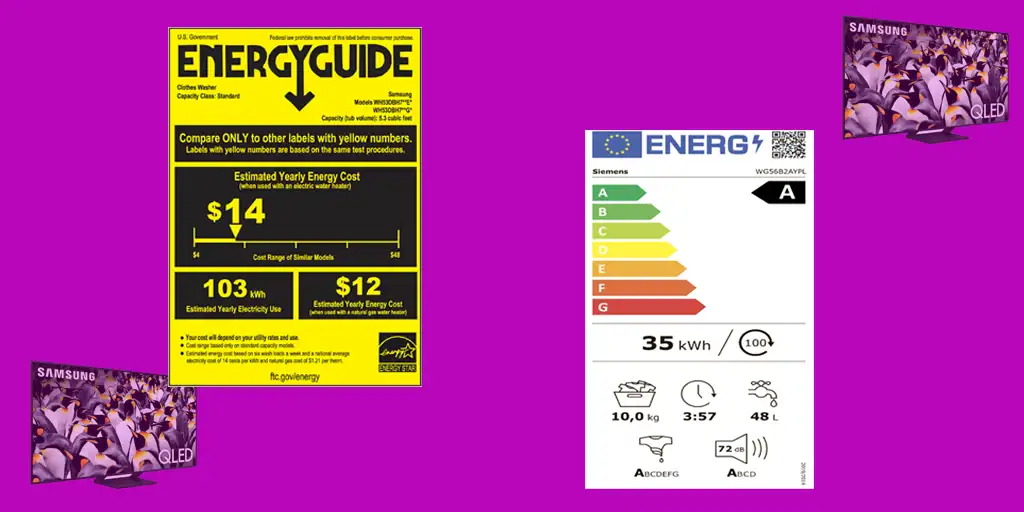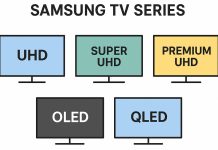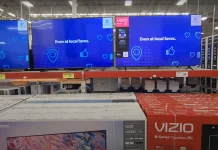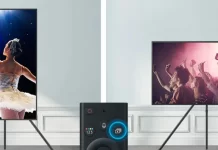When purchasing an electrical appliance, the main expense over time comes from electricity consumption. To help consumers make informed choices, energy efficiency ratings were introduced. In Europe, this led to the creation of the EU Energy Efficiency Index, while in the United States, the Federal Trade Commission developed the yellow energy efficiency label. Additionally, the ENERGY STAR certification is widely used to indicate energy-efficient products.
Below is an example of energy efficiency labels used in the US and Europe.
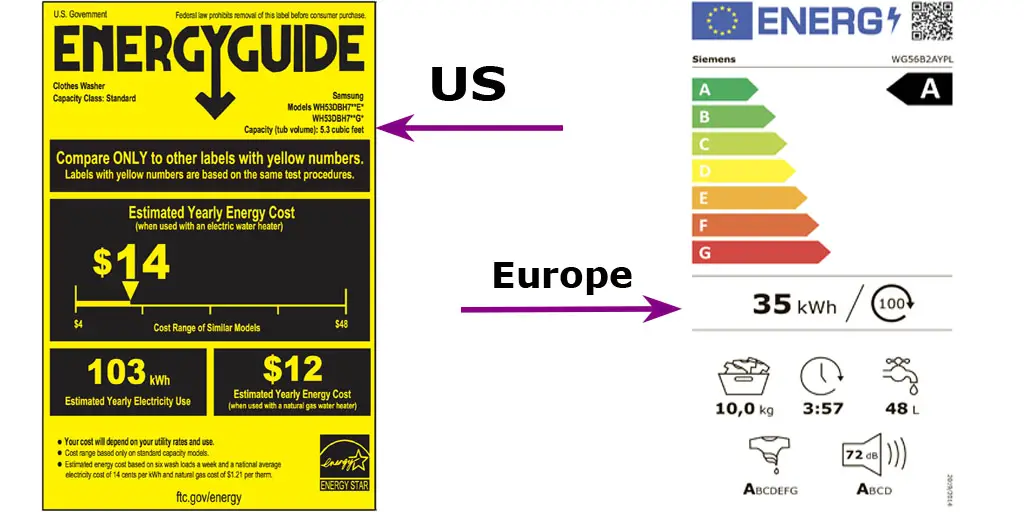
Energy Efficiency Index (EEI) in Europe and the USA
When comparing energy efficiency labels, the U.S. approach stands out for its simplicity—it directly translates energy consumption into dollar costs, making it easy for consumers to estimate expenses. In contrast, Europe’s system is based on kilowatt-hour consumption, as a unified currency across countries is not available. To provide additional insights, European labels also include related costs, such as water consumption for washing machines, washing duration, and other factors.
However, in reality, these calculations are quite approximate and do not always reflect actual costs. Here are a few examples:
- TVs: Energy consumption is based on 3–4 hours of daily viewing at average brightness and contrast settings. However, HDR mode can increase power usage by up to 30%, which is not accounted for in these ratings.
- Washing Machines: The cost of detergents and maintenance is not considered, even though it can be a significant factor. Some models use special detergent cartridges, which can cost dozens of times more than the annual electricity consumption of the appliance.
Ultimately, energy efficiency labels provide a rough estimate of energy consumption, which can be useful for comparison but should not be the sole factor in choosing an appliance.


